Red Nose Pitbull: Facts, Puppy Prices & Temperament
When you purchase through links on our site, we may earn a commission. Here’s how it works.
The Red Nose Pitbull is sometimes referred to as a breed in its own right. But it’s actually just a red-coated, red-nose variety of the American Pitbull Terrier (APBT). American Pitbull Terriers come in a range of different colors. Those with a blue or red nose are often specifically referred to as such.
Table of Contents
The Red Nose Pitbull is often one of the more sought-after colorings of the breed. This is due to their beautiful coloring. Their prices can typically be a little higher as a result. This is especially true for dogs from champion lines that have been bred for many years. Pitbulls are a very popular pick for a family pup, despite their sometimes aggressive reputation.
In this quick overview, we get to know the Red Nose Pitbull. First, we look at some facts and the history of the APBT. Next, we will examine specifics around the Red Nose, including the most commonly asked questions about the breed color variant.
APBT History

The American Pitbull Terrier has its roots in 19th-century England. Here the powerful, muscular bully breeds were often developed to keep unruly bulls and livestock under control. In those days, bull baiting was a cruel blood sport that these dogs were often bred to participate in.
Bullbaiting was banned in the middle of the 19th century. Unfortunately, dog fighting then became a popular, albeit illegal, betting sport, and because the law was more difficult to enforce, it flourished. The bully breeds continued to be developed to harness their fighting strength and aggressive nature towards other dogs.
It is believed that during this time, the American Pitbull Terrier and the Staffordshire Bull Terrier were considered the same breed.
In the 1930s, it is said that the American Kennel Club (AKC) wanted to distance the dogs from their fighting reputation. They wanted to develop their strengths as companion animals. At this point, the Staffordshire Terrier was given official AKC status, but the American Pitbull Terrier was not. The ‘Staffie’ became known as the American Staffordshire Terrier by the AKC in 1972. At that time, the breed standard became much more specific.
The American Pitbull Terrier has never been recognized as an official breed by the AKC. It is, however, recognized by the United Kennel Club (UKC) and the Continental Kennel Club (CKC).
Red Nose History
The Red Nose Pitbull is sometimes referred to as the ‘Old Family Red Nose’ variety of the APBT. This relates to a particular line from Ireland in the late 19th century. They are known for their unique color and also their game and eager spirit.
Because of this line’s popularity and their breeding with other lines, it does mean that not all Red Nose Pitbulls are part of this strain now. But there are still breeding enthusiasts that work to preserve this specific line.
APBT Reputation
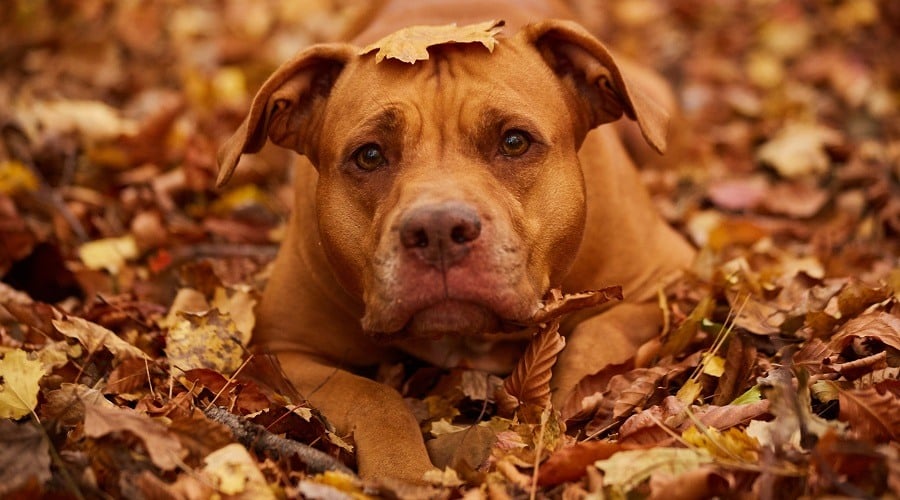
Many people think that a Pitbull is a specific breed all of its own. It’s actually a term that is often used for several different types of bully breeds. The American Pitbull Terrier (APBT) and sometimes even the Staffordshire Bull Terrier and American Staffordshire Terrier are often lumped into the same category. In reality, they are all entirely separate breeds of dogs. They are sometimes referred to as ‘Bully’ breeds and include Bulldogs and English Bull Terriers.
The term ‘Pitbull’ is one that, in recent decades, has begun to conjure up images of vicious, aggressive dogs. Because of this fear, many believe they do not deserve a loving family home. This is a tragedy, given that much of the reputation they have garnered is unfair.
Because the American Pitbull Terrier, due to its powerful physique, historical breeding, and jaws, has been favored by those that encourage dogfighting and those that want to own a powerful status symbol dog, they often end up in the wrong hands with irresponsible owners that have helped to give the breed a bad name.
Red Nose Reputation
The Red Nose Pitbull is the second-rarest color combination available. The only rarer colors are white and merle Pitbulls. They were originally bred specifically due to their feisty attitudes. This means that they were commonly bred as fighting dogs when they were originally created. Typically, blue Pitbulls are extremely well sought after, as are red noses.
Because this recessive gene persists, they are also more expensive than other color variants. This is especially true if they are from a reputable breeder. There are many other different types of Pitbulls, with many different color variations, and those are usually viewed in the Pitbull community as being more docile.
Identifying A Red Nose
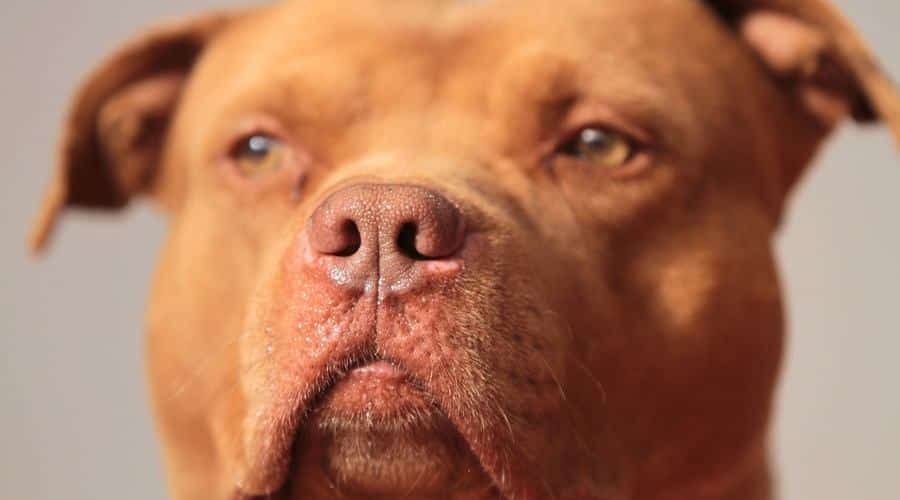
A true Red-Nose Pitbull will have a full-on red coat with a matching coppery-colored nose. They also have red or amber eyes, making a striking color combination. This makes them easily identifiable from other color variants.
Some white is permissible in the red coat, but usually speaking, the less white, the better. They are distinctly different from the Blue Nose Pitbull in appearance. Comparisons are often made between the two. APBTs can get mistaken for other breeds, but usually not so much with the Red Nose.
Red Nose Size, Weight & Color
The Red Nose Pitbull, like other APBTs, can vary a fair bit in size. This depends on their breeding lines and sex. It is typically classified as a medium-sized dog, usually weighing anything from around 30 to 60 pounds. But these pups are also densely muscular. They don’t tend to grow much over 20 inches to the withers.
They always have a red nose, red (rather than black) nails, and a red coat (although they may sometimes have flashes of white). While the white color is permissible, more often than not, people buying Red-Nosed Pitbull puppies usually want pups that have fewer traces of white.
Personality
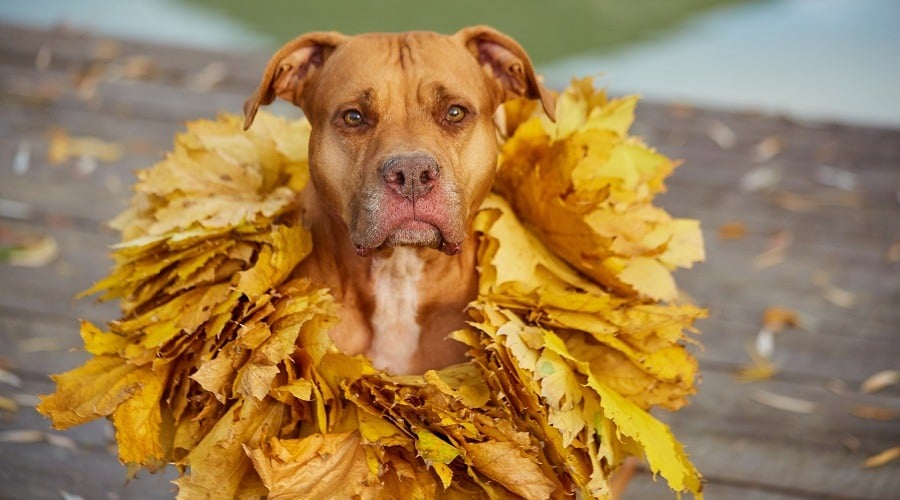
It is always important to recognize that every dog is an individual. Of course, the early and ongoing socialization and training that the dog receives are also vitally important in helping to shape their temperament. That being said, there can be certain traits that are commonly seen across a particular breed.
The traits detailed below relate to all APBTs. The Red Nose variety does not have any specific characteristics of its own. The breed is often associated with being extremely devoted to their family. They are known for being very loving and sociable with their people, and they enjoy being showered with affection and attention.
They are also a very energetic breed that loves to play and be active. Their natural curiosity can mean they are very adaptable and enjoy going on adventures with their family. Because of their breeding history, they can have a high prey drive. This means that they can tend to chase small furries.
Depending on their upbringing and their genetic lines, some Red Nose Pitbulls may be reactive toward other dogs. Sometimes they may be better suited to being an only dog. Or, they will need very careful introductions living with well-suited other doggy family members.
If you are expecting a guard dog, given their reputation, you may be in for a surprise. They are a very alert and courageous breed. They will likely defend their family ferociously if they feel threatened. That being said, their general love for humans means they are likelier to greet approaching visitors to your home with a waggy tail and a lick of the face. It is often asked if Red Nose Pitbull likes to cuddle, and the answer is yes, they sure do. Pitties are known as big cuddlers, and the red-nosed variety is no exception.
As Family Pets
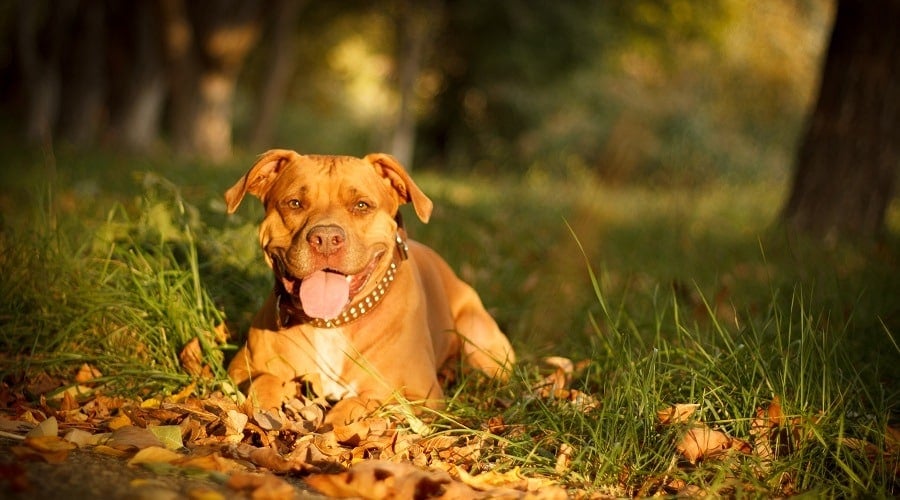
The Red Nose Pitbull, and any other APBT for that matter, can make a wonderful family pet. They usually adore their families, including children. They are not always the right dog for a novice dog owner, though. Their sheer strength is something that you need to consider. If you are managing problems or unwanted behaviors, then having the skills to implement training plans with confidence will be important.
It is also important to consider the potential that any pup can be dog aggressive. This can be more common with Pitbulls because they were bred for this trait over time. As mentioned before, many APBTs are very placid and sociable with other dogs.
But they do have more of a likelihood of having dog reactivity than many other breeds. Care must be taken to introduce them to other dogs in the family. When you are out, they may need to stay leashed and possibly muzzled. You would need to consider your lifestyle and your levels of responsibility too.
Most APBTs are often extraordinarily affectionate and tolerant toward children. It’s important to note that if you have kids, you ensure they are respectful and know how to interact appropriately. This goes for their interactions with any breed. But, because of the sheer strength of these dogs, they could do more harm than a little toy breed dog would if they decide they have had enough.
Exercise Requirements
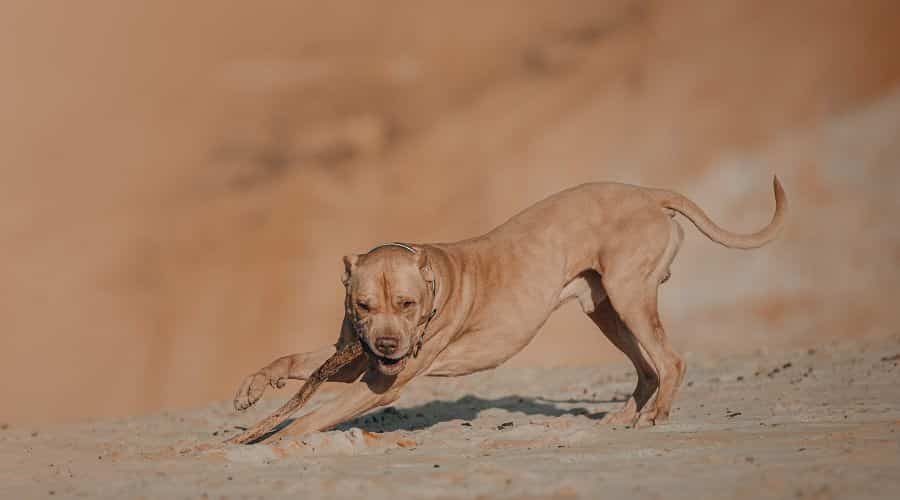
Red Nose Pitbulls tend to be high-energy dogs. They have more significant exercise requirements than some breeds. If they do not get sufficient exercise and stimulation, they can be prone to making their own entertainment. This usually equates to them becoming destructive in the home.
Given the strength of their jaws, this could result in some serious damage to your home furnishings. These dogs are working dogs. You’ll want to keep them busy and also well-fueled to take on the challenges of walks or jogs at least once (if not twice) per day.
Like with any breed, if they are understimulated, other problem behaviors are more likely to manifest. Pitbulls, in general, can become hyperactive, stressed, and mischievous.
A Red Nose Pitbull should live in an active home where they benefit from at least two decent daily walks. They have a lot of stamina. They love to hike or take part in other high-energy activities.
It’s also important to ensure they have plenty of things to keep them mentally enriched around the home. They are dogs that have a natural desire to chew. Providing a selection of extremely tough toys can be beneficial.
Health & Nutrition
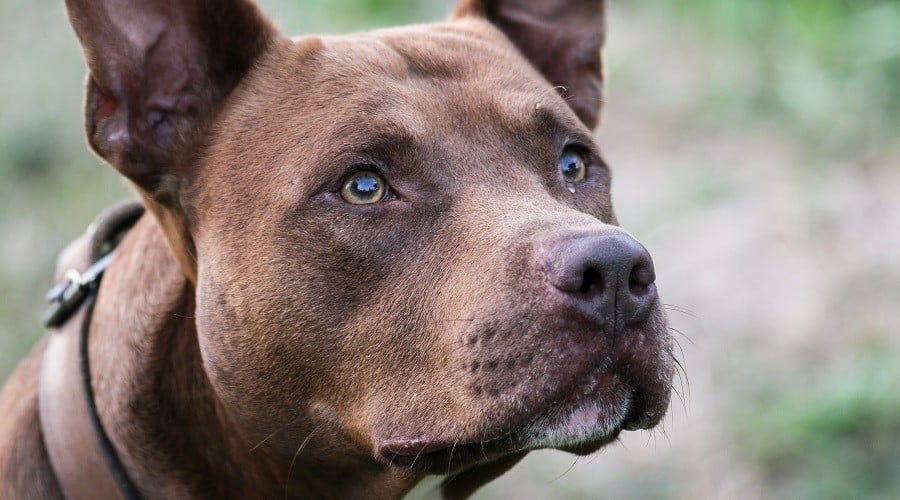
The Red Nose Pitbull, generally speaking, has few health issues for a purebred pup. The APBT, in general, is a healthy dog. You’ll want to watch for basic health issues as they age, but this is the same for most breeds. Consider pet insurance for your Pitbull to help offset medical expenses.
Red Nose Pitbulls are not more or less apt to encounter any health problems compared to any other breed coloring. They are sometimes recognized as having sensitive skin, but getting a shampoo specifically formulated for their coat will help.
Nutritionally, the Red Nose Pitbull does not need to have additional nutritional requirements compared to any other purebred Pitbull. You’ll want to make sure you have the right food for a Pitbull, especially as your pup advances in age. As dog’s age, they have different nutritional requirements. It’s important to make sure you are meeting their needs at different stages in life. This will help ensure your Red Nose Pitbull stays healthy and maximizes its lifespan.
Training
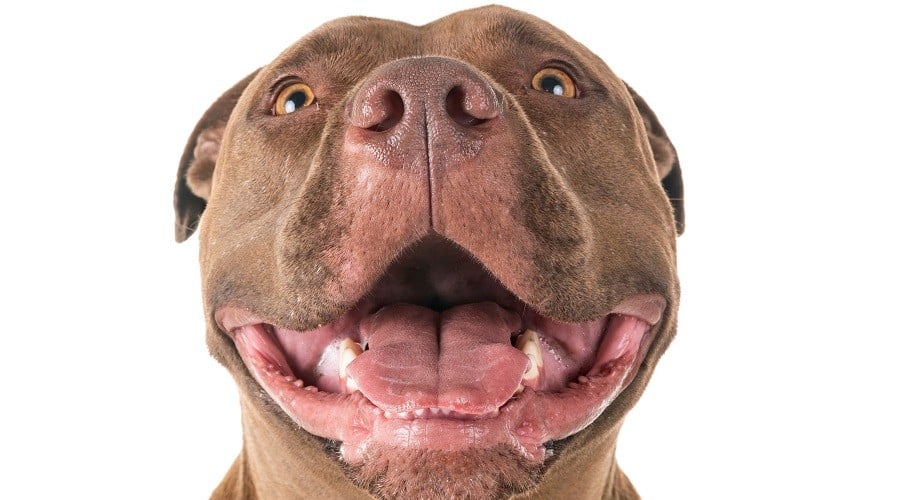
Socialization and training are crucial for any dog. The same goes for The Red Nose Pitbull and other APBTs, and perhaps more so than some other breeds, given their stronger genetic propensity towards dog aggression and their sheer strength. Crate training is recommended for this breed. Make sure you look at crates that are Pitbull-sized if you intend to incorporate crate training into your routine.
Early and ongoing appropriate socialization is of great importance. While you should not overwhelm your dog, careful and positive exposure to new people, dogs and environments can have a considerable influence on shaping your dog’s personality going forward. They are a very intelligent breed that is generally eager to please, and this means that with patience, consistency, and the use of positive, reward-based training, you can see great results.
Be careful of using aversives with this breed. Force-free methods are scientifically proven to be more effective (and they are gentler too). Forcing your dog to do something through pain or fear can mess with the bond of trust you have developed, and if the dog becomes fearful or grows short on patience, they could react negatively towards this type of training and the handler. A bite from a breed with such a powerful jaw can be devastating.
Because of Breed Specific Legislation, in some states, your dog may be required to be kept on a leash and wear a muzzle at all times in public spaces. Teaching your dog to be comfortable wearing a well-fitting muzzle could save a lot of stress for you and your dog.
It would also be sensible to ensure you have mastered good loose-leash walking skills. If they always have to be kept on a tight leash or harness, your walks will not be as enjoyable if they constantly pull, and, given their strength, they could even tug you over.
Red Nose Pitbull Puppy Prices
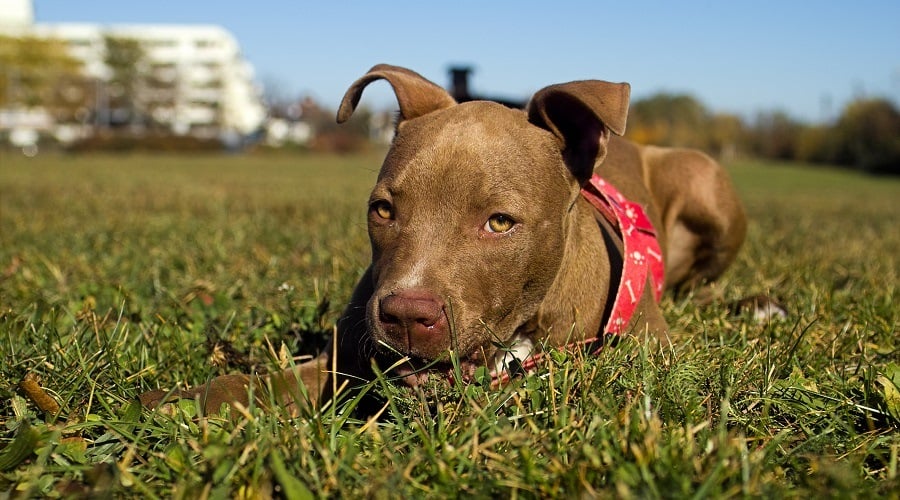
With any breed, it is crucial that you do your research and make sure that, if you are buying a puppy, you go to a responsible breeder. You want to look for someone that does all the appropriate health screening of parents, allows you to visit mum and her pups in a nurturing home environment, does not separate mum and pups until after they are eight weeks old and fully weaned, and has had all the puppies vet checked.
A typical Red Nose from a reputable breeder will not cost any less than $1,000. If your pup is advertised at a price that’s less than this, make sure you do your research. Some can cost as much as $3,000 or more if they are bred from top bloodlines.
The breeder should be one that focuses on temperament. Given that the breed is often promoted as a fighting dog, good breeders will look for dogs that have a less dog-reactive personality to breed from. Don’t forget that early socialization and training is also important by the breeders, and when you get your puppy home too.
Rescues & Shelters
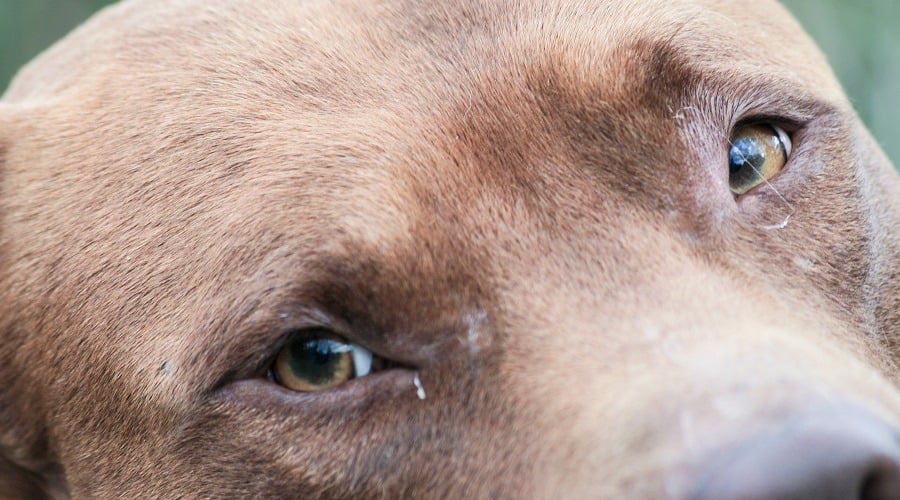
Given their reputation, these dogs are, unfortunately, often taken on by the wrong types of owners. If they are not cutting the mustard as a fighting dog, or they are taken on as a status symbol without thought for their care, they often end up being abandoned or cruelly treated. This means that there can be an abundance of this breed in rescue shelters across the country.
Because of the restrictions with Breed Specific Legislation and the unfair reputation the breed has developed, this can mean that they can languish in shelters longer than many other breeds do. It is all the more tragic given that they often make wonderful family pets.
Adopting a dog can be such a rewarding and worthwhile experience. There are many APBTs (including the Red Nose variety) in shelters across the country and foster homes through rescues that do not keep dogs in a kennel environment. This can be a good route to consider if you want to find a dog that has already been assessed in a home environment.
Breed-Specific Legislation
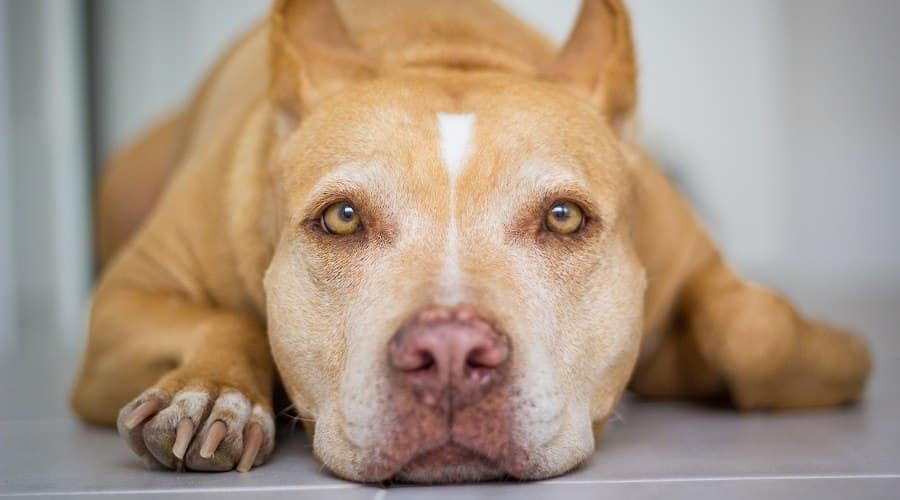
Breed Specific Legislation (BSL) relates to the laws around dogs that have been ‘labeled’ as being dangerous and more of a risk to the general public. These legislations vary across countries and also across the different states in the US. In some states, the American Pitbull Terrier is a banned breed. In others, the dogs are not allowed to be out in public spaces unless they are on a leash and wearing a muzzle.
Many animal welfare advocates and campaigners see the legislation as being woefully inappropriate. It is recognized by many dog behavior experts that targeting irresponsible owners, rather than punishing particular breeds overall, would be a much more effective way to tackle the problem of dog attacks.
This statement from the ASPCA about Pitbulls and BSL sums up the argument very well and in great detail. We would urge you to read it to gain a more balanced understanding of the issue.
People often ask if Red Nose Pitbulls are more aggressive, and the answer is no. Like all other dogs, they can be aggressive when startled or feel threatened. Aggression will depend on the specific dog, but overall these dogs are not any more aggressive than others or other Pitbulls.
Final Thoughts
If you have been someone that has always thought of the Red Nose Pitbull, and American Pitbull Terriers in general, as being dogs that are known for being aggressive and dangerous, we hope this article has helped to dispel some of the unfair myths. The Red-Nose Pitbull can be an amazing and loving family companion if they are raised with a firm yet loving hand.
Red Nose Pitbulls are not recommended for first-time dog owners. They should be only adopted into homes where they will get enough exercise and stimulation. They should also receive consistent positive reinforcement training. If these are all implemented, they can thrive and make both loving and loyal family pets. It’s worth remembering that the Red Nose Pitbull is a powerful breed. You’ll need to be ready to put in the time required to train your pup properly.



